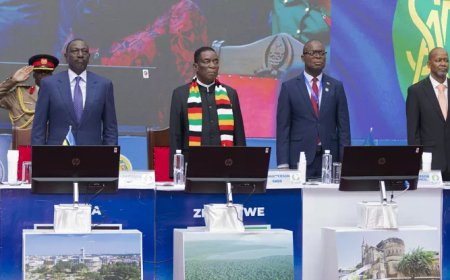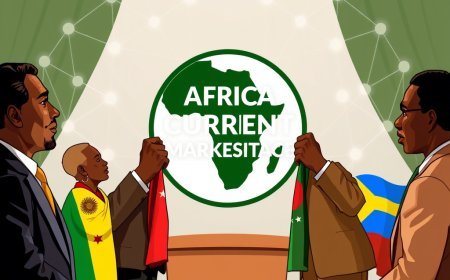In Kenya, girls are sold into marriage to stave off starvation from drought

Marsabit, Kenya – Under the scorching midday sun, Dukano Kelle begins her grueling trek from Kambinye, a desolate settlement nestled amid northern Kenya’s arid plains. The 34-year-old mother of five coaxes her reluctant donkey forward with an acacia branch, braving oppressive heat and hunger to reach the nearest borehole—a destination that offers little solace as water levels continue to plummet.
For nearly two decades, this exhausting journey has been a twice-weekly ordeal for Dukano since she was married off at just 15 years old. Her story echoes across the vast expanse of northern Kenya, where thousands of women endure similar struggles, living in makeshift nomadic shelters surrounded by black volcanic boulders. What was once a precarious existence has now become a daily fight for survival.
The Harsh Reality of Climate Change
Aid organizations warn that climate change is intensifying droughts, making them both more frequent and severe, while deepening inequality in ways that are often overlooked. For communities like Dukano’s, prolonged periods without rain have pushed life to its breaking point. Livestock—the backbone of livelihoods here—are dying en masse due to starvation and dehydration as grazing lands turn barren. Families face impossible choices, including offering their daughters into early marriages in exchange for livestock, which provides temporary relief but perpetuates cycles of poverty and hardship.
“I’ve seen too many young girls taken away before they even finish growing up,” says Amina Galgallo, a local activist working to combat child marriage. “Drought made us much poorer, and desperation drives these decisions.”
In regions such as Marsabit County, near Kenya’s border with Ethiopia, entire villages bear witness to this grim reality. Many girls are married off as children and soon find themselves responsible for raising families of their own—often lacking education or resources to escape the cycle of deprivation.
A Journey Through Desperation
After nearly two hours of walking under the relentless sun, Dukano reaches the borehole that serves as a lifeline for her community. The donkey groans under the weight of six yellow jerry cans strapped tightly to its back. Other women gather nearby, squatting in the sparse shade of a skeletal acacia tree, waiting patiently—or anxiously—for their turn at the dwindling supply.
Men remain conspicuously absent from the scene. Relieved of the day’s harshest task, they stay behind in remote settlements while their wives shoulder the burden of securing water—a stark reflection of entrenched gender roles exacerbated by crisis.
Upon reaching the well, Dukano peers down into the three-meter-deep concrete tank. Only about 10 centimeters (four inches) of muddy water remains—a meager reserve trucked in using borrowed funds repaid with goats, the only form of currency available to the villagers. One woman explains that this scant supply might last until next week—if everyone uses it sparingly.
Deepening Inequalities
The cascading effects of climate-induced drought extend far beyond thirst and hunger. Education rates among girls are plummeting as they are pulled out of school to assist with household chores or married off early. Health risks rise as clean water becomes scarcer, leading to outbreaks of waterborne diseases. Meanwhile, economic opportunities vanish alongside fertile land and healthy livestock.
“This isn’t just about water; it’s about dignity, equality, and survival,” says James Lokapel, a humanitarian worker stationed in Marsabit. “Communities here are resilient, but resilience has limits when faced with such relentless adversity.”
Hope Amidst Despair
Despite the bleak outlook, some grassroots initiatives are emerging to address the crisis. Local NGOs and international aid groups are drilling new boreholes, installing solar-powered pumps, and promoting sustainable farming practices adapted to arid climates. However, progress is slow, hampered by limited funding and logistical challenges posed by the region’s rugged terrain.
Community leaders are also advocating for greater awareness around the dangers of child marriage, urging parents to prioritize education over short-term gains. Yet cultural norms and economic pressures make changing mindsets an uphill battle.
A Call to Action
Experts emphasize that addressing the root causes of this crisis requires urgent global action on climate change, coupled with targeted investments in infrastructure, education, and social programs. Without intervention, the situation risks spiraling further out of control, leaving countless families trapped in a vicious cycle of poverty and despair.
As Dukano prepares to retrace her steps back home, the weight of her burden—both literal and metaphorical—is etched deeply into her weary expression. She knows tomorrow will bring another long walk, another empty well, and another test of endurance. But for now, all she can do is keep moving forward, one step at a time.
For more stories highlighting the human impact of climate change, follow Intels News.
Editor’s Note: This article sheds light on the devastating consequences of climate change in northern Kenya. Readers are encouraged to support organizations working to provide clean water, education, and empowerment to affected communities.
What's Your Reaction?
 Like
0
Like
0
 Dislike
0
Dislike
0
 Love
0
Love
0
 Funny
0
Funny
0
 Angry
0
Angry
0
 Sad
0
Sad
0
 Wow
0
Wow
0


















